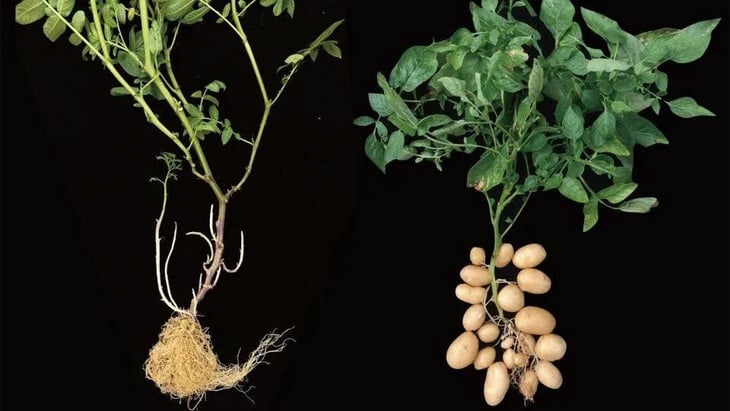
Potatoes are a familiar food on dinner tables around the world , but it turns out they have a surprising origin - Photo: AGIS-CAAS
In a publication in the scientific journal Cell, an international group of evolutionary biologists and gene decoding experts has just announced a surprising solution: potatoes may have been formed from a random "gene exchange" between a wild tomato species and a tuberless plant species called Etuberosum, about 9 million years ago.
Although neither tomato nor Etuberosum produces underground tubers, the hybridization between them has resulted in a new plant species that does. Tubers are nutrient storage organs that help plants adapt to the increasingly cold environment of the Andes.
Later, humans domesticated them and turned the potato into one of the world's main food sources. There are now more than 100 species of wild potatoes that grow tubers, although not all are edible because they contain toxins.
"The evolution to grow tubers has given potatoes a superior advantage in harsh environments, thereby expanding the species and creating the rich diversity we have today," said Professor Sanwen Huang, president of the Chinese Academy of Tropical Agricultural Sciences and head of the research team.
Discover the genes hidden behind potatoes
To trace the origins of this familiar tuber, the team analyzed 450 genomes from wild and domesticated potato varieties. The results showed that about 14 million years ago, wild tomato and Etuberosum diverged from a common ancestor. By about 9 million years ago, natural hybridization between the two branches had produced a tuberous plant, the precursor to the modern potato.
Etuberosum consists of just three species, which resemble potatoes in flower and leaf shape but do not grow tubers. These species are now found only in a few isolated places such as Juan Fernández Island in the Pacific Ocean and the rainforests of Chile. This makes the relationship between potatoes and Etuberosum even more controversial, because potatoes seem to be genetically closer to tomatoes.
The scientists used phylogenetic analysis, a method similar to DNA-based mother-daughter or sister-parent relationships in humans, to clarify the issue. They found genetic markers that sometimes showed potato as a “sister” to Etuberosum, but other times more closely related to tomato. This contradiction was the clue that opened the door to solving the mystery.
"We use genetic signals from the past, still present in present-day plants, to reconstruct the evolutionary journey," explains botanist Sandy Knapp from the Natural History Museum in London, who was part of the research team.
They collected genetic data from both museum specimens and rare wild potato varieties found only in a few small valleys in the Andes. It is the most comprehensive wild potato genetic database ever analyzed.
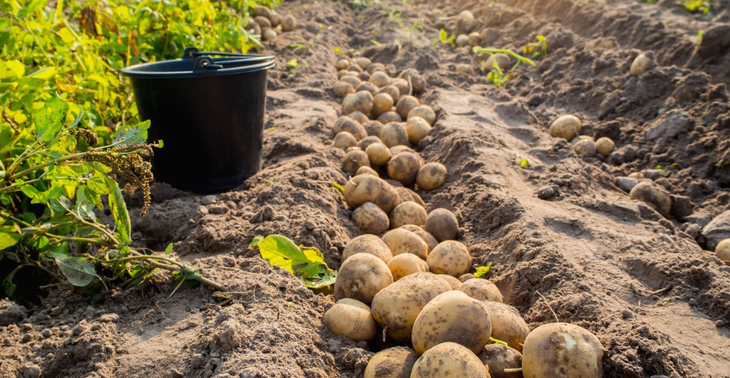
Potatoes are one of the key food crops that have fed humanity, having been domesticated in the Andes region about 10,000 years ago. However, because plants leave few traces in the fossil record, the evolutionary origin of potatoes remains a long-standing mystery to scientists - Photo: AI
Potato: The Result of Luck
Fun fact: Potato is the first species to carry genes from both its “parents” Etuberosum and tomato. Perhaps due to geological or climatic changes, these two ancient plants once coexisted in the same area and were cross-pollinated by bees.
The tomato gene carries the SP6A “master switch,” a signal that triggers tuber growth. Meanwhile, the IT1 gene from Etuberosum controls the development of underground stems, which form starchy tubers. Without either gene, potatoes cannot form tubers.
"When you crossbreed, the genes are shuffled like a deck of cards, and luckily, in that random combination, two important genes met, creating the ability to grow tubers. It was completely by chance," said botanist Knapp.
This event occurred at a time when the Andes were being dramatically uplifted by plate tectonics. The harsh, cold, dry landscape at high altitudes provided the ideal environment for the development of a new potato, which did not need seeds or pollination but propagated through tubers. Each tuber grew into a new plant, and the new plant produced tubers, a closed cycle that allowed them to survive and spread.
A Promising Future for New Potato Varieties
Potatoes are now the third most important food crop globally, after wheat and rice, contributing to 80% of the calories consumed by humans.
Understanding the evolutionary origins of potatoes could help researchers create new varieties that are better adapted to climate change, pests, and drought. Bringing back some key genes from tomatoes could shorten the growing cycle, or create potatoes that grow from seeds instead of tubers.
Genetic diversity is also important. Modern potatoes are often propagated asexually by cutting off tubers and planting them so that they are genetically identical. If a new pest or disease appears, entire fields can be wiped out. On the other hand, potatoes grown from seeds or wild varieties may be more resistant to disease.
"We were interested in how wild potatoes develop resistance to disease, as well as why some pests attack potatoes and not tomatoes," said researcher Amy Charkowski from Colorado State University.
Potatoes remain a lifesaver in many dry, short-summer, high-altitude regions where rice or corn cannot grow. And the tuber’s strange origins, a chance combination of two unrelated plants, are precisely what makes it special.
Source: https://tuoitre.vn/phat-hien-thu-vi-to-tien-cua-khoai-tay-la-ca-chua-2025080209574457.htm


![[Photo] Binh Trieu 1 Bridge has been completed, raised by 1.1m, and will open to traffic at the end of November.](https://vphoto.vietnam.vn/thumb/1200x675/vietnam/resource/IMAGE/2025/10/2/a6549e2a3b5848a1ba76a1ded6141fae)







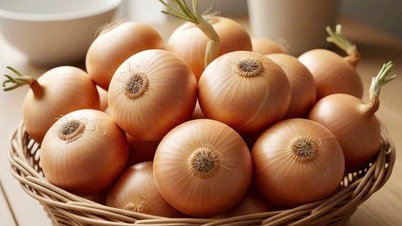
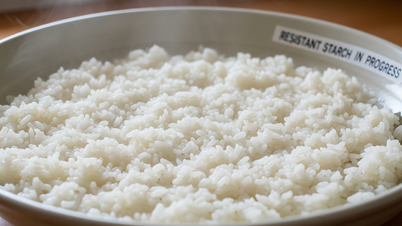
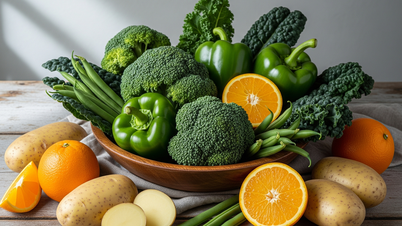

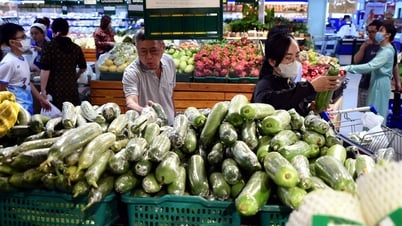
























































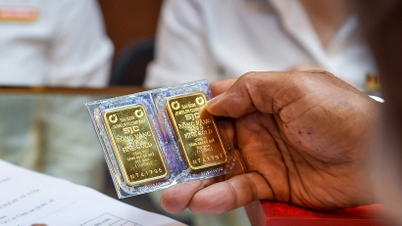





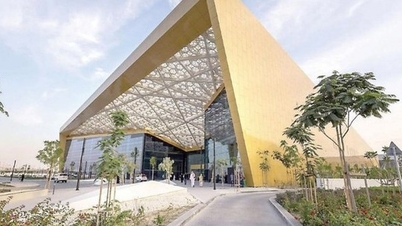

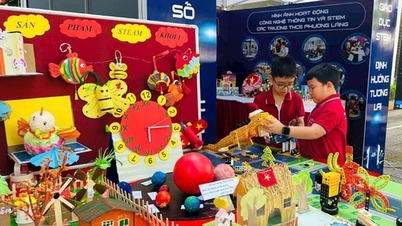




















Comment (0)